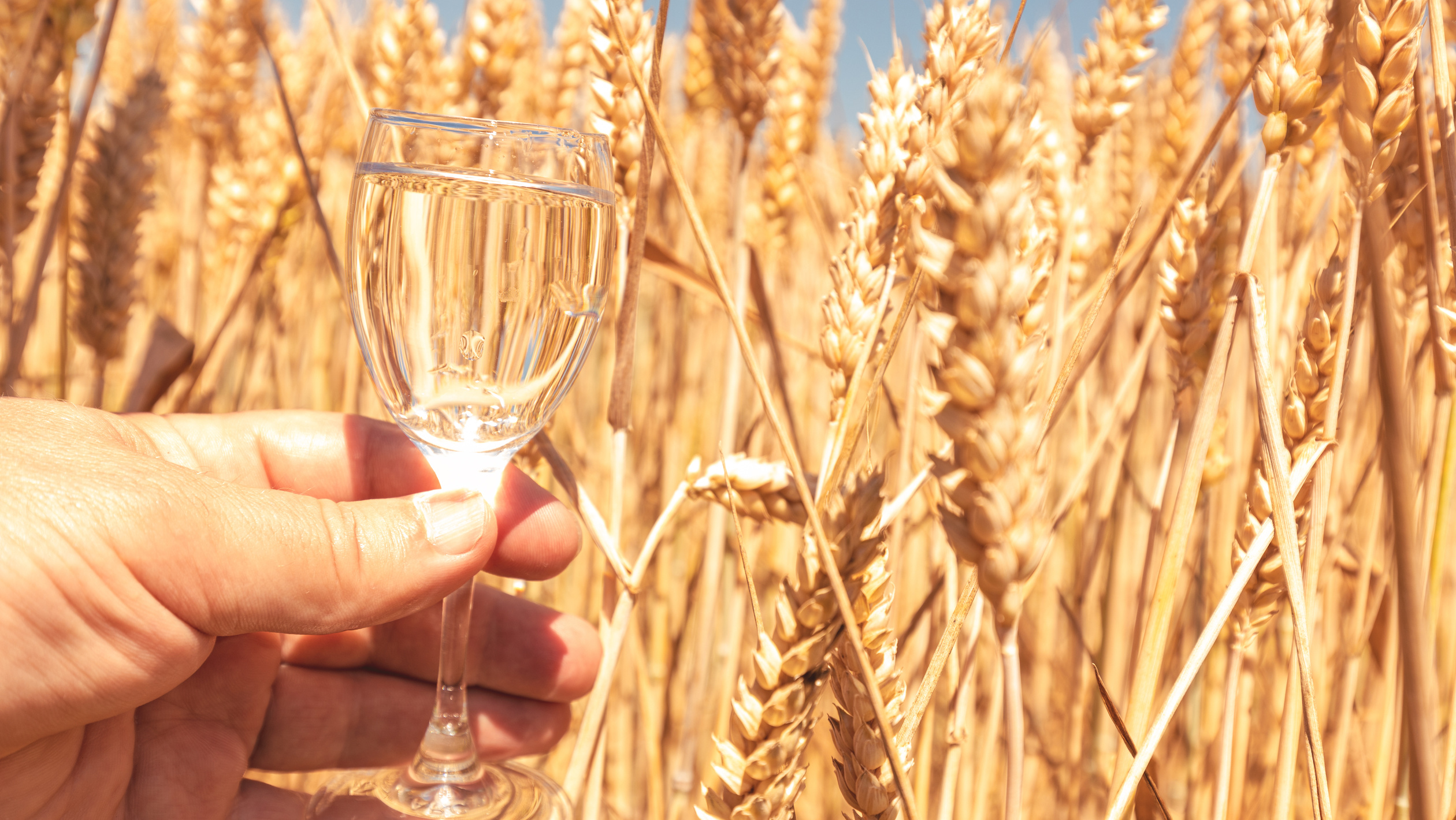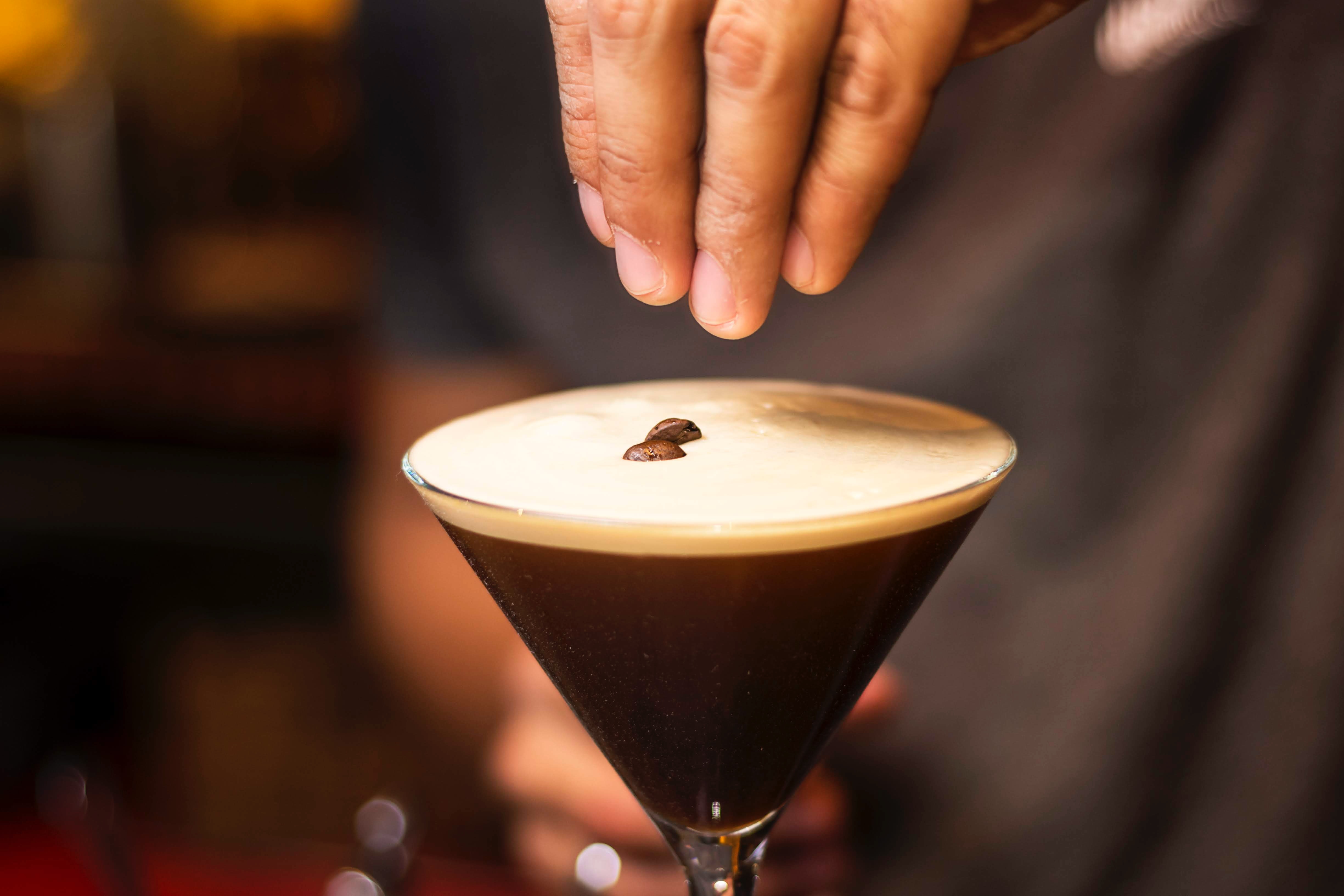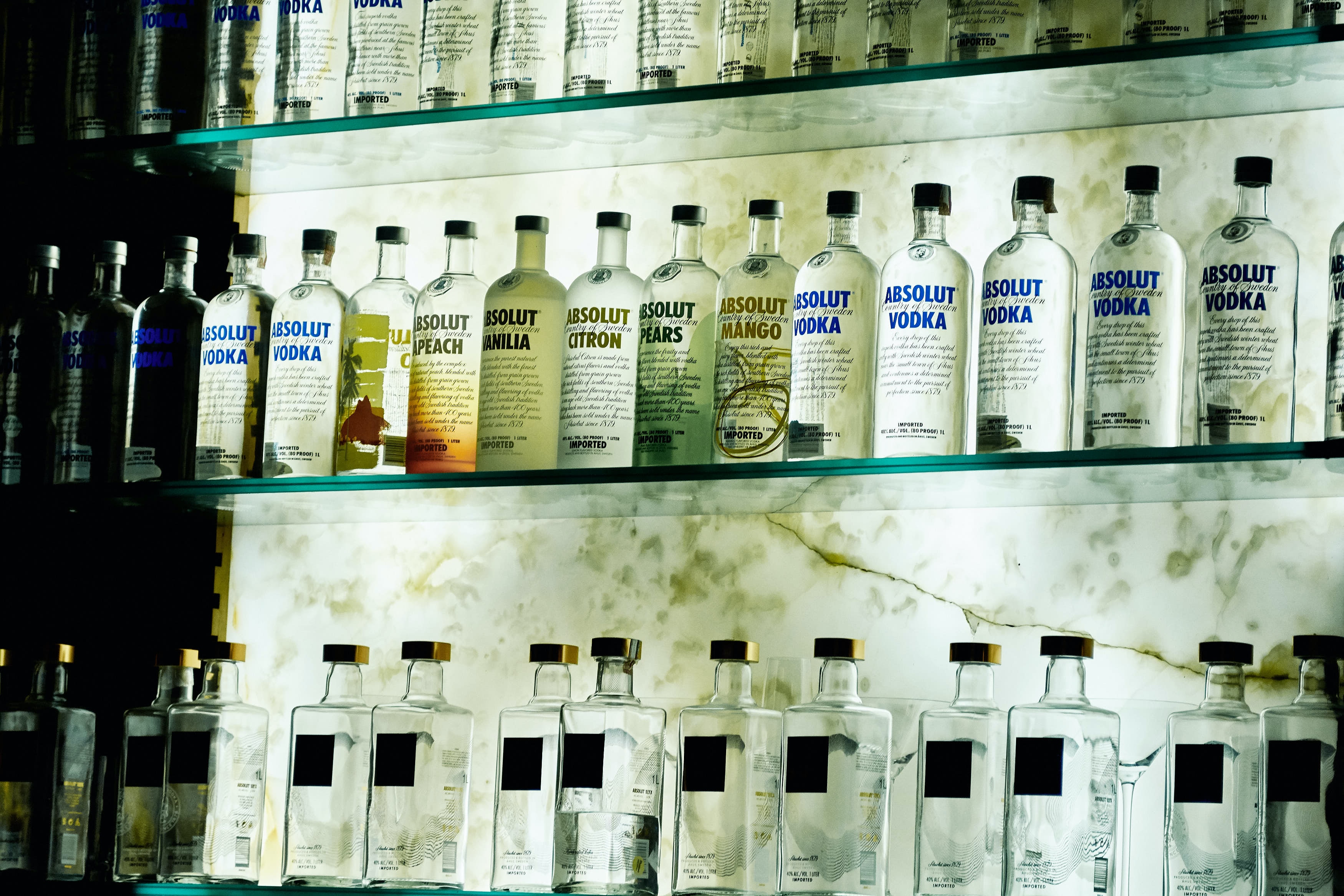Vodka has been the number-one-selling spirit in America since the 1970s, but recent headlines would lead you to believe that America’s favorite spirit is experiencing turbulence in the market. While it may be true that tequila is predicted to surpass the vodka category in sales volume in the coming years, recent data shows the category is in relatively good health.
However, as consumer tastes and economic factors change, so must suppliers’ strategies. What once worked in vodka is no longer guaranteed. Rising demand for craft spirits is driving new brands to enter an already saturated and competitive market. In fact, there are now 547 vodka distilleries in the U.S., an increase of +9.7 percent from 2022 according to Ibis World. And as more consumers purchase more consciously, brands that specialize in organic and sustainable production are winning at the register. Demand for RTDs, flavored vodka and premium vodka spirits is growing, too.
How is vodka choosing to lead in this new era? Let’s take a closer look at how the category is reinventing itself in an effort to maintain its celebrated golden status.

The Growing Emphasis on Craft and Artisanal Vodkas
Premium craft spirits are gaining significant traction in the US. While craft brands make up a relatively small percentage of the spirits market, they’re set to outperform the non-craft market in the coming years. According to IWSR, despite pandemic woes, craft spirits in the US registered a volume gain of nearly +8 percent, while non-craft spirits volumes posted approximately a +5 percent growth. This allowed the craft segment to achieve a +5 percent volume share of the total US spirits market, and a +7 percent value share. The gap between them is set to widen. IWSR predicts a +21 percent CAGR in US craft spirits for 2020-25, while US non-craft spirits are expected to register a +4 percent CAGR for the same period.
This trend isn’t limited to one spirit type. Vodka is experiencing a boom in craft distillers as much as the whiskey category. It makes sense. For new brands entering the market, Vodka is cheap, easy to produce, and quickly ready for retail, versus spirits that need aging or further maturation. Therefore, brands can capitalize on marketing small-batch, limited production runs to support their bottom line while they age other spirit types.
According to Technavio, the global craft vodka market size is estimated to grow by $760M from 2022 to 2027. The report identified the key factors driving its growth as the increase in demand for flavored vodka, especially among Millennials and the female demographic, and the growth of online retail sales which allows smaller craft brands to get discovered.
But with the growth in craft distilleries, comes the need for diversifying a brand.
The Organic and Sustainable Vodka Trend
“Organic” and “Sustainable” may seem to some like buzzwords in the drinks industry, especially in spirits, but it’s spurred by a sharp increase in demand. Conscious consumerism is growing worldwide as consumers purchase brands that are more aligned with their values. This is a win-win for brands that seek to do more environmental good and benefit from it financially.
Vodka is closely aligned with this growing segment. Organic vodka brands like Square One are not just producing organic vodka but also doing so in an eco-friendly way. The farm-to-bottle, female-owned company uses 100 percent USDA organic rye and spring water from the surrounding Teton mountains to make its vodka and is heralded for it. It’s one of the fastest-growing organic vodka brands on Provi, according to H1 2023 Provi Pulse data.

Another brand leading this effort, Meili Vodka from actor Jason Momoa, is made solely with grain sourced from the brand’s farms, purposefully located near the brand’s water source and distillery, which reduces the distillery’s carbon footprint. Meili is also packaged in what is said to be the first 100 percent recycled glass bottle on the market.
Sales of organic and sustainable vodka are trending, too. Among on- and off-premise beverage buyers in Provi’s B2B marketplace, the market share for organic vodka increased by +6.43 percent in Q2 compared to Q1 this year. The market share for sustainable vodka grew by +2.08 percent in the same period.
Trending Organic Vodka Brands in the Provi Marketplace (based on Provi Pulse H1 2023 data insights)
- Crop Vodka
- Prairie Organic Spirits
- Hanson of Sonoma Distillery
- Supergay Spirits
- Rain Spirits
- Thatcher's Organic Artisan Spirits
- Square One Organic Spirits
- McClintock Distilling
- Tom of Finland
- Purity Distillery
Trending Sustainable Vodka Brands in the Provi Marketplace (based on Provi Pulse H1 2023 data insights)
- Crop Vodka
- Marble Distilling
- Liv Vodka
- Hotel Tango Distillery
- Prairie Organic Spirits
- Dogfish Head Spirits
- Far North Spirits
- CopperMuse Distillery
Premiumization of the Vodka Market
In 2022, vodka sales in the U.S. totaled $7.2B but were flat year-over-year. However, IWSR data shows that the global premium-and-above segment of vodka has seen positive growth, expanding in volume consumption by +6 percent in 2022, with expected growth of +3 percent volume CAGR 2022–27. An example of this is Belvedere 10, which highlights the unique source of its raw ingredients while marketing a limited, bespoke take. The rye used to produce Belvedere 10 comes from a single harvest from just one rye field in north-east Poland. The sculpted bottle features 10 levels, a reference to the 10-step process used to create it.
Premiumization is also growing across other vodka-related segments, particularly in the RTD/RTS category. “The [vodka] market remains vibrant, propelled by both vodka-based RTD and RTS, which are recruiting new drinkers into the category,” said Aleco Azqueta, Vice President of Marketing, North America for Grey Goose.
There is a clear interest from premium brands to enter the growing segment. Grey Goose recently introduced its Classic Martini Cocktail — a ready-to-serve vodka cocktail made with its spirit, dry vermouth and orange bitters and comes packaged in the brand’s signature frosted glass 375ml format (SRP$16.99) or 750ml format ($29.99).
According to NielsenIQ, by mid-2022, the dollar growth of spirits-based hard seltzers grew another 73 percent year-over-year (off-premise dollar sales from 2020 to 2021 increased 156 percent for spirits-based hard seltzers for the 52-week period ending October 2021). RTD cocktails, which were tracked separately, also saw 61 percent growth (sales for RTD cocktails grew 126 percent in the same 52-week period ending in October 2021).
Why have RTDs become such a boom for vodka spirits in recent years? It's partly because the spirit is so versatile which allows for it to be a perfect addition to flavored RTD beverages. The other part of its growth lies in the convenience of RTDs. “Canned cocktails are a convenient and quality solution for cocktail lovers,” said Earl Kight, the co-founder and chief sales and marketing officer for Cutwater Spirits. “No ingredients, no prep or clean-up. They offer controlled ABVs and consistently taste delicious.”
RTDs have come a long way from the cheap, malt-based beverages of the past, becoming more sophisticated as demand for more premium spirits drifts into the RTD category. “The RTD category has grown from less expensive offerings made with artificial ingredients and neon colors to cocktails made with natural flavors and premium spirits,” said Kelly Gasink, the co-founder of Austin Cocktails.
How Flavored Vodka is Driving New Growth
The flavored vodka category is also adapting to consumer trends. Flavored vodka of the past is often thought of as artificial and cloying. However, that’s changing. Many distillers have looked to gin production to reimagine their flavored vodka spirits, distilling botanicals to extract flavors rather than macerating or adding artificial ingredients to achieve a perceived flavor. The result is a truer essence that’s generally less sweet and lower in calories which plays into the interest of health-conscious consumers.
Many brands are playing into this by marketing their spirits in a similar manner to the botanical nature of gin. For example, Ketel One’s Botanical line of spirits speaks to being 'made with vodka distilled from real botanicals and infused with natural flavors' as well as the absence of artificial ingredients and zero sugars.
It’s having an impact on sales. When speaking on the segments that are influencing premiumization in vodka, Mike Ginley, President NV Group USA, producers of Smoke Lab Vodka told Beverage Dynamic, “Flavored vodkas are anticipated to maintain strong growth with expected CAGR of 4.5 [percent]. Within the flavored segment, consumer interest in natural and authentic flavors — spice, herb, citrus, vegetable — continues to gain traction.”
Cocktails are Reigniting Vodka’s Growth
Bars and restaurants are busy as ever as pandemic woes recede. It’s no secret that consumers are pining for simpler times. Today, nostalgia is reflected in all aspects of our lives — from the clothes we wear to the music we listen to. It’s also printed on every bar menu across the country.
“We’ve really seen a resurgence in the classic cocktails of the 1990s,” said Sophie Clerc, Brand Director, Vodka, Moet Hennessy USA, who makes Belvedere Vodka. “Vodka martinis, [as] opposed to gin-based martinis, are prominent at bars and restaurants again. So are Espresso Martinis, which entered the top 10 list of most ordered cocktails at U.S. bars in 2022, according to research firm CGA by Nielsen IQ.”

It’s true. The Cape Codders, Cosmos and Dirty Shirley’s of the ‘90s are all making a comeback. But none more so than the Espresso Martini.
“The Espresso Martini has taken the industry by storm, and the momentum just keeps continuing,” said Reshma Dhati, Senior Brand Director of Marketing, Absolut. “Vodka as a category has now fully recovered in the on-premise. When consumers take a night off from being their own bartender, they are ordering trendy vodka drinks like an Absolut Espresso Martini or Cosmopolitan.”
Diageo, which produces Smirnoff, attributed its double-digit vodka sales growth in 2022 to a +300 percent jump in cocktail consumption both at home and the on-premise, as vodka sales soared by +11 percent in the year ending June 30, 2022. It can likely thank the popularity of the Espresso Martini for that.
These cocktails trends show no sign of slowing down. As consumers continue to flock to their favorite bars — and interest in mixing cocktails at home continues to grow — vodka will play an integral role.
Despite Flattening Sales, Vodka is Diversifying to Get Ahead
While it’s true that vodka sales were flat year-over-year, the category is diversifying, with craft brands, RTDs and premiumization driving significant growth. Organic and Sustainable Vodka lines are also part of this new narrative. And as the category adapts to continued shifts in consumer tastes and behaviors, both plain and flavored vodka products will continue to find areas of growth to continue its status as America’s top-selling spirit.



Comments